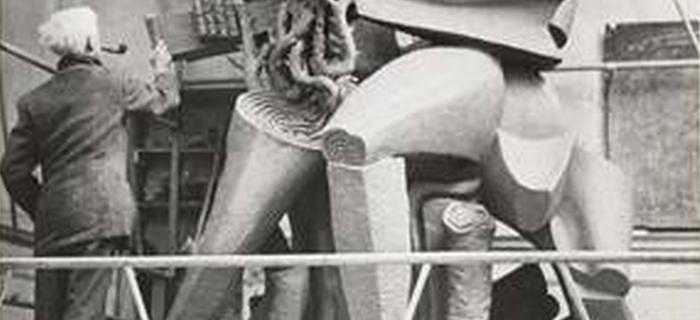DÉCOUVREZ LES 14 MUSÉES DE LA VILLE DE PARIS
Main menu

1945-1958 “Beginning to Rebuild"
Zadkine returned to France "greatly changed and devastated" but resumed life in Quercy. "First of all I made a group of three characters the base of which was like the aftermath of a disaster – broken forms, chaotic in their decline – and the top pierced but rebuilt; I was facing The Human Forest". Amidst the chaos his art regained a unity of movement and momentum. The memory of the towns shattered by the war – Le Havre, Rotterdam – dictated to him the project for the monument of The Destroyed City “with its arms thrown up towards the sky”. The municipality of Rotterdam ordered this monument from him in 1950. In the same year, Zadkine received the grand prix for sculpture at the Venice Biennale and took part in the exhibition “L’Art sacré, œuvres françaises des XIXe et XXe siècles” (Sacred Art, French Works of the Nineteenth and Twentieth Centuries) at the Musée National d’Art Moderne. The first work in wood which he carved on his return with "an intense and intimate joy" was a Christ, acquired by the State in 1952. He continued to teach in his Paris studio and at the Académie de la Grande Chaumière. International recognition was displayed through exhibitions at the Palais des Beaux-Arts in Brussels (1948), the Boymans Museum in Rotterdam (1949), and the Fujikawa Gallery in Japan (1954).